
Großer Tornower See, Märkische Schweiz
A cold wind whistles through the bare branches, the March sun resides high in the sky. Despite the warm rays of the sun, our thermometer does not climb to positive figures today. For days the ground has congealed under strong frost. We start our hike from the Kneipp-Kurort Buckow in the center of the Märkische Schweiz Nature Park, about 50 kilometers east of Berlin. Our goal is the Großer Tornower See.
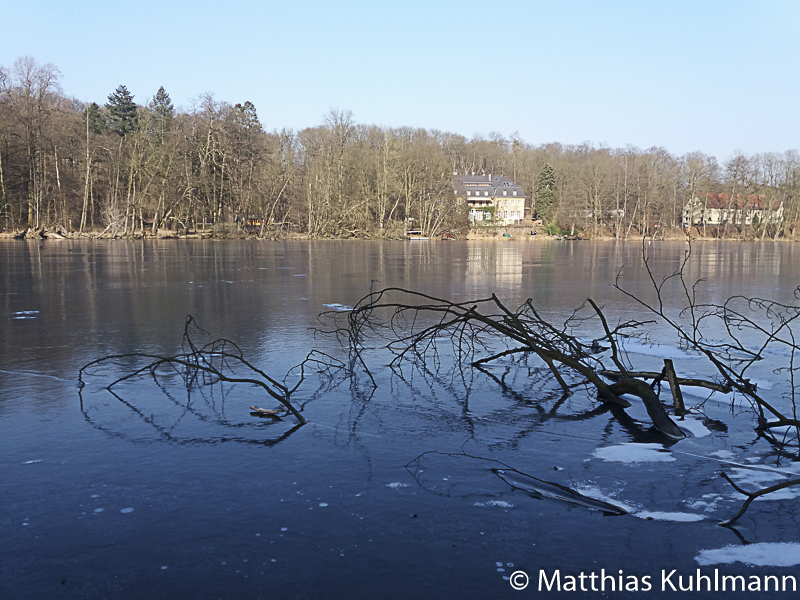
Großer Tornower See, Märkische Schweiz
The walk to Tornow is easy and takes approximately three quarters of an hour. We pass through a section of Buckow, past the Nature Park Center “Schweizer Haus” and walk along a little stream. While slowly approaching the lake one can witness activities of nocturnal residents: beavers have chewed their way through thin tree trunks – quite a number of them have fallen victim to the strong teeth. A resident at the lake informs us that two beaver families reside within the lake. The shy creatures do not show themselves today. It is too cold.
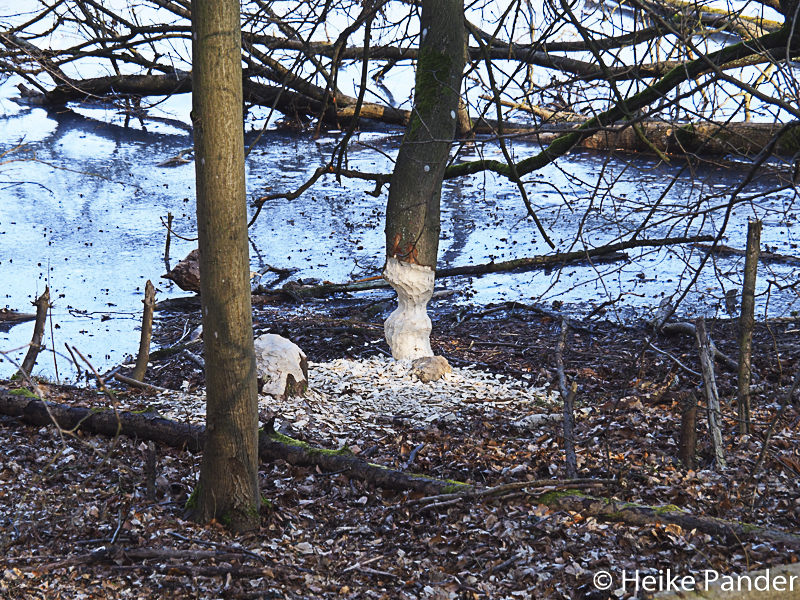
Nagespuren Biber, Großer Tornower See, Märkische Schweiz
The frozen lake lies still before us. I place my first steps carefully on the ice. I am fascinated by the bubbles within the ice. They ascended from the mud of the lake ground but could not make it through the ice. The frozen bubbles are not only mystery of the lake. An engineer who lives nearby tells us the story that a plane from World War II is buried in the deep water at the southern tip of the lake. All attempts to recover it have failed so far. Maybe one of the beaver families has moved into the wreck – it supposedly settled in this part of the lake.
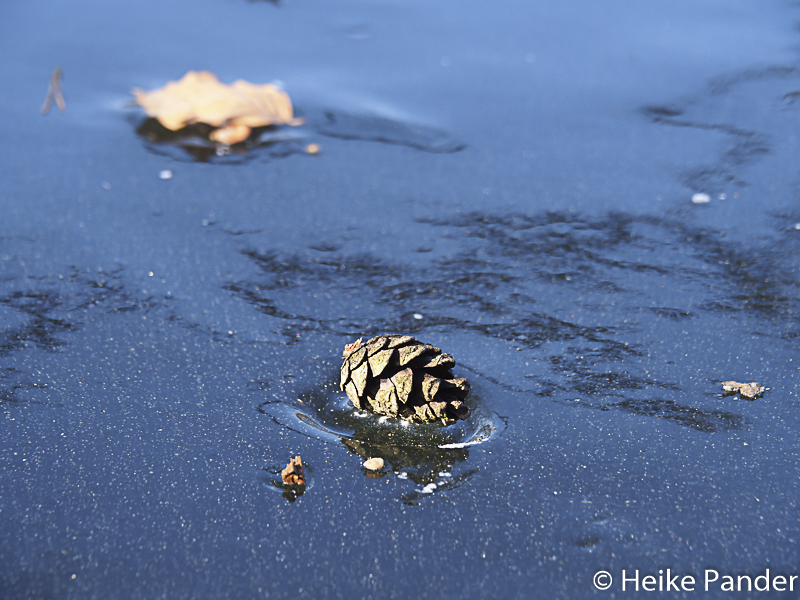
Eisdetail, Großer Tornower See, Märkische Schweiz
We did not bring skates for ice skating – nevertheless sliding was fun. What an unusual perspective! Usually I get to see the lake only from the shore or from a boat but today I can marvel at its surroundings from the lake center.
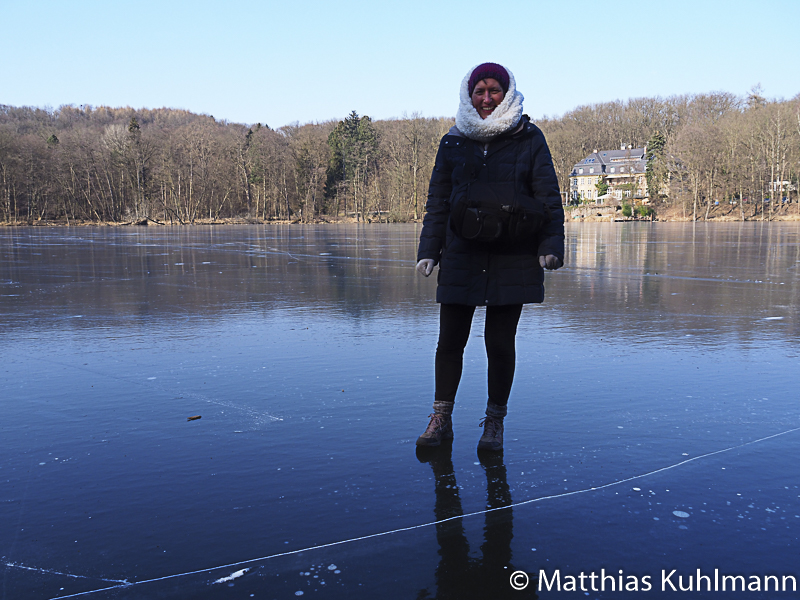
Großer Tornower See, Märkische Schweiz
The Haus am Tornower See resides above the lake. It is a popular place for family celebrations. From time to time it opens its doors for overnight guests. The house has lived through a rich history. First it was built and used as a holiday home, later on during the Second World War as a field hospital and after the war and until the late 1990s as an orphanage. “PRENZLKOMM”, a psycho-social organization from Berlin has managed the building since 2000.

Eisdetail, Großer Tornower See, Märkische Schweiz
Every step on the frozen lake emits unreal noises. We hear cracking and eerie sounds. The engineer explains that the ice is under pressure because of the high temperature impact of the sun during the day. The ice shows cracks everywhere. But once they occur they close immediately – the ice is quite strong and can carry a lot of weight, says the engineer. He checked the ice a few days ago and took a test drill. At that stage it was nearly 23 centimeters thick.
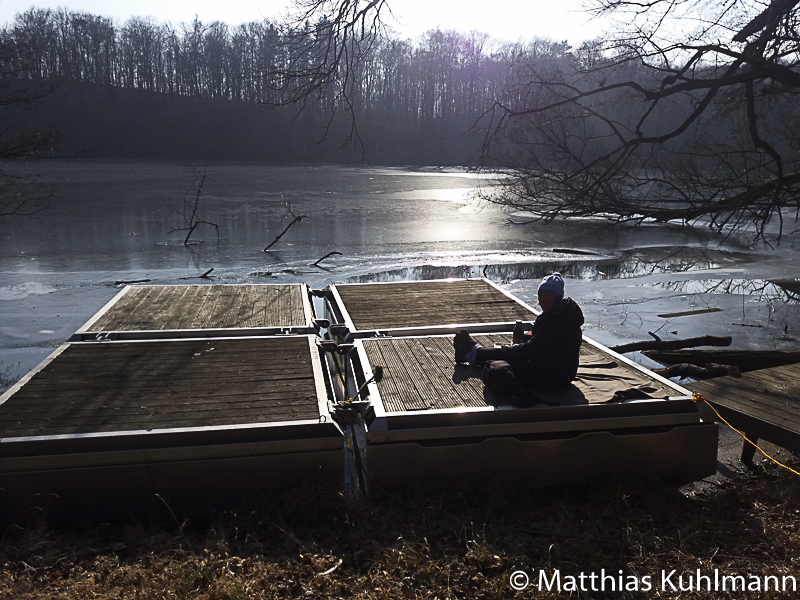
Großer Tornower See, Märkische Schweiz
He says that the sounds of the ice are particularly intense during the night hours. We are keen to hear them and drive out to the lake at night again. Our on-board thermometer in the car indicates minus 10 ° C. It is bitterly cold and we stand on the shore trembling. Nothing happens. Apart from two very moderate little cracks and the calls of a little owl we cannot hear a thing. The forces that move the ice do not reveal themselves and we decide to return home after a few minutes in the cold.
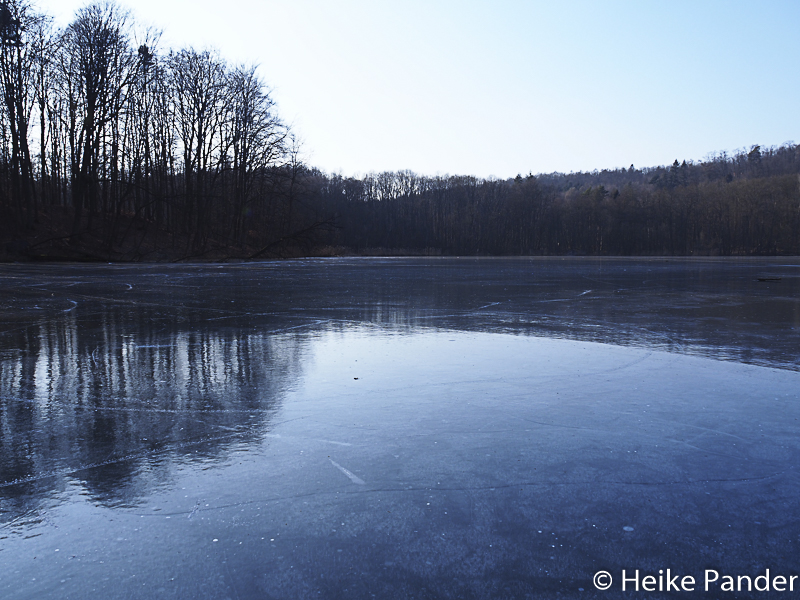
Kleiner Tornower See, Märkische Schweiz
